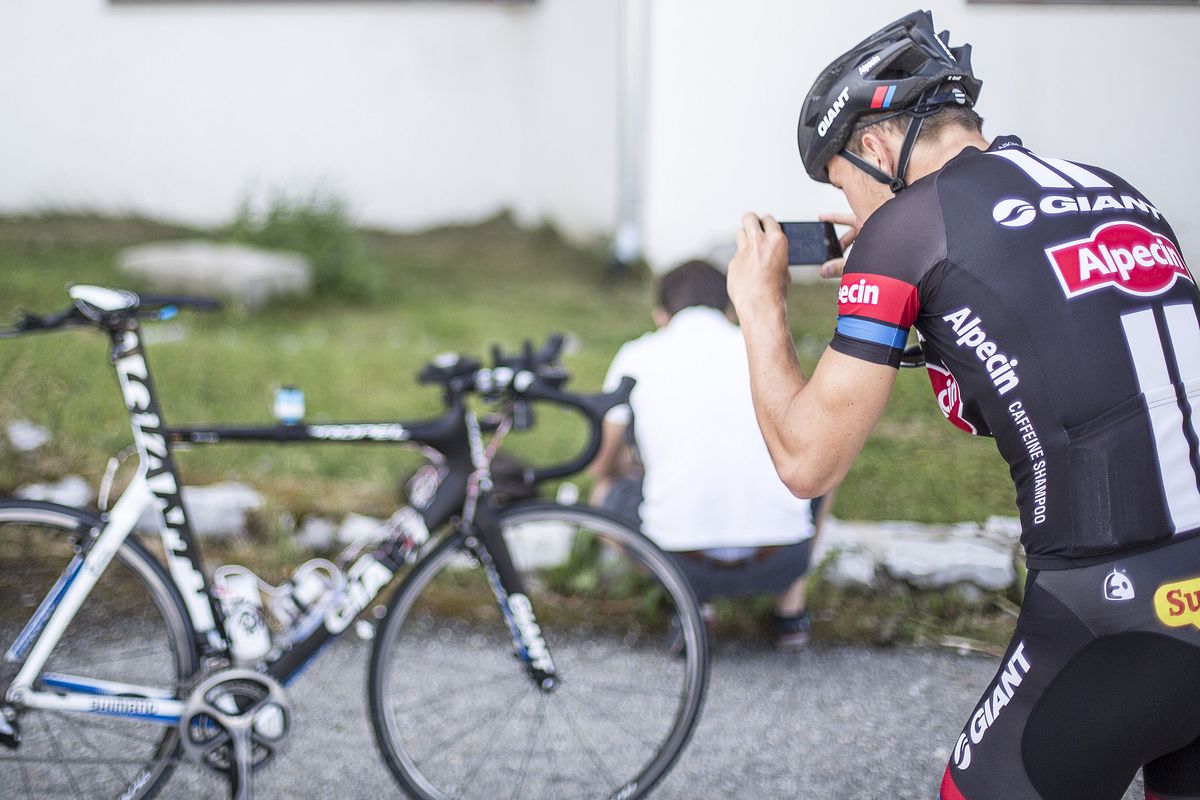TU Delft student Niels Lommers created a ‘measurement bike’ that records how professional cyclists steer and brake. He believes that the equipment will help athletes gain precious time in corners.
‘Better understanding of when to brake and the best way to take a corner can provide a crucial edge on the competition’, said Lommers, who graduated at 3mE faculty on Friday, 27 November. ‘Despite this, how cyclists brake and steer has generally been taken for granted in cycle racing. That’s why I dedicated my graduation research to developing a method and a ‘measurement bike’ to provide cyclists with feedback on their cornering technique.’
The equipment measures important variables such as; roll angle, steer angle, rear and front brake force, location and forward speed of the bicycle. The roll angle was measured with infrared distance sensors, the steer angle using a string potentiometer and the brake forces with a aluminium tube instrumented with strain gauges.
GPS was used to determine the location and speed of the bicycle and a mathematical model translated the location of the bicycle into path coordinates of the track. Furthermore, a third-person video camera was mounted behind and above the participant to get a overall impression of the ride.
Last year, Lommers performed experiments in France with the TU Delft Sport Engineering Institute and the professional cycling team Team Giant-Alpecin (also the team that Dutch cycling star Tom Dumoulin is part of). They performed an observation study with 6 professional cyclists.
The cyclists rode each time the same descent track with a length of 1 kilometre and a descent height of 67 meter. Both the cyclists and their individual bicycles were instrumented with the measurement equipment. Each cyclist completed a minimum of 4 trials. The cyclists were instructed to go as fast as possible down the track, but they were confined to their own lane and not allowed to pedal.
The results show that the best indicator for the fastest descent time is the braking technique. Differences in the positions on the road were expected to influence the descent time, but unfortunately these differences fell within the measurement inaccuracy.
‘Future research should be mainly focussed on improving the measurement equipment’, Lommers concludes in his graduation report.
‘The preliminary experiments that were conducted at our training camp in La Plagne, France, resulted in various interesting outcomes and insights’, Teun van Erp, the scientific expert at Team Giant-Alpecin said in a TU Delft press release. ‘However, the measurement bike in its current form is still primarily a scientific instrument and is yet to become a high-performance racing bike. This is just the beginning. We’re going to be collaborating with the TU Delft Sports Engineering Institute to see what the next step should be.’



Comments are closed.